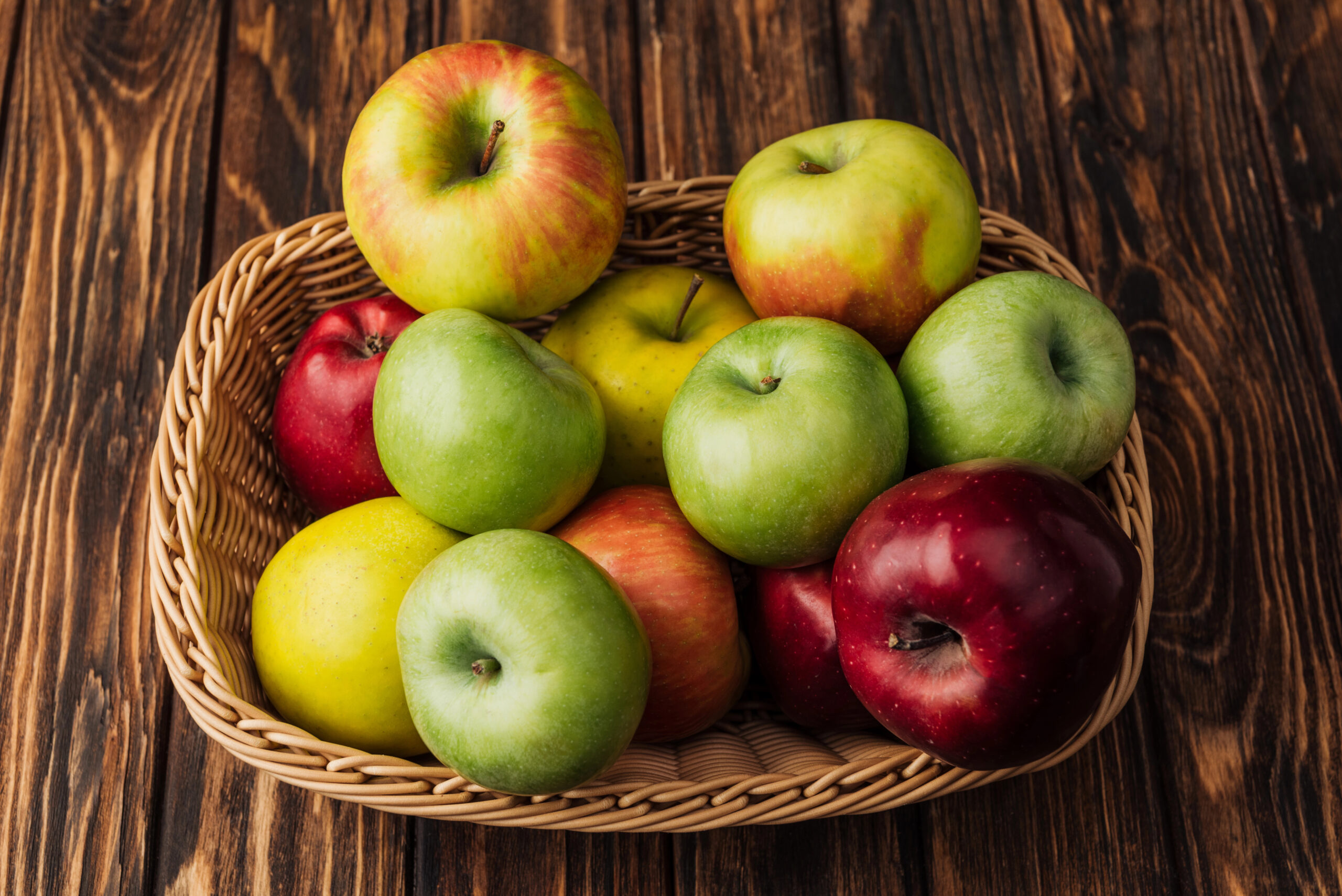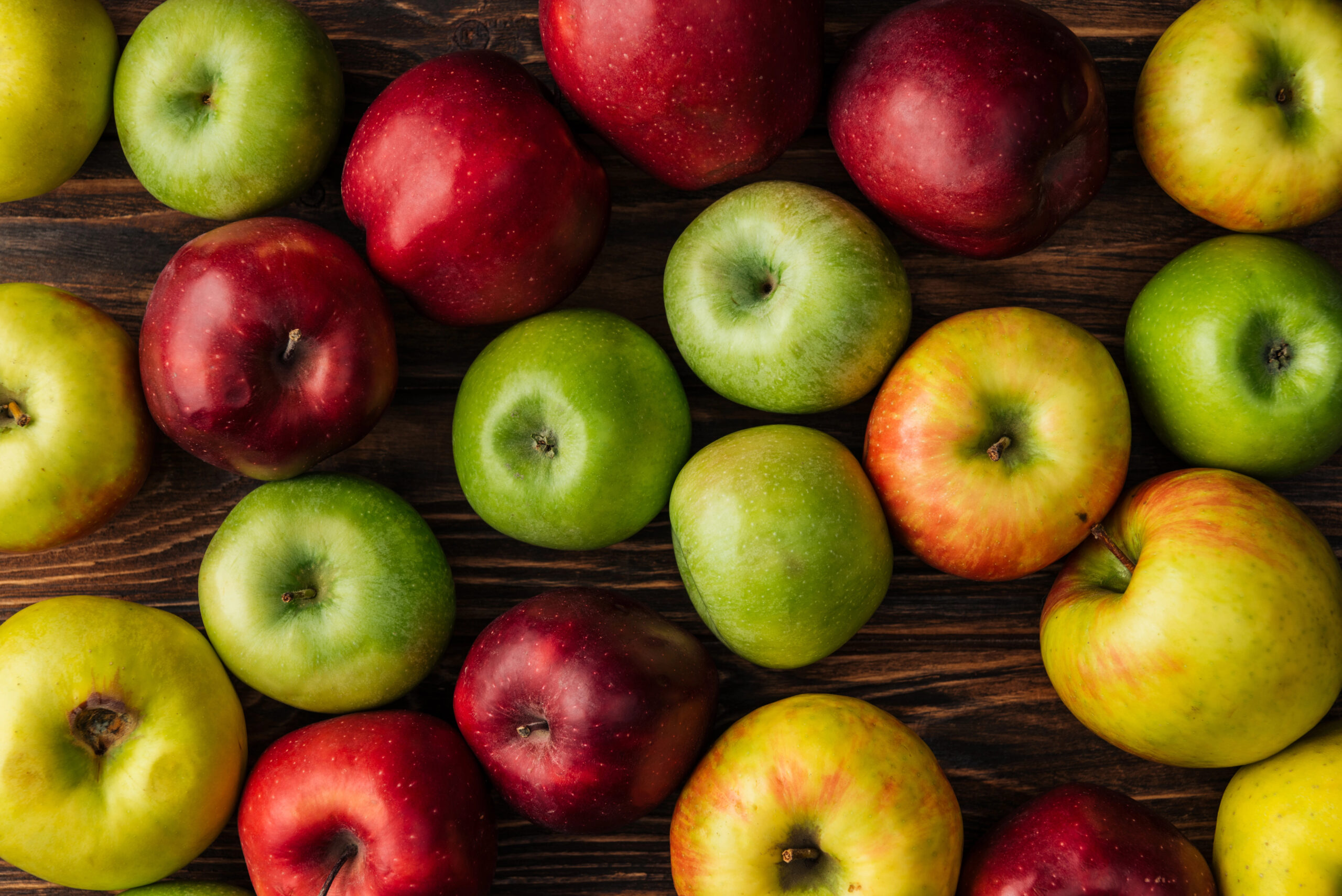The humble yet extraordinary apple we've all grown to love has been a staple in diets around the world for centuries.
Its crisp texture, refreshing taste, and incredible versatility make it a beloved favorite.
But beyond its delightful flavor, the apple offers a myriad of health benefits that can enhance your well-being.
Imagine biting into a juicy, fresh apple, not only enjoying its natural sweetness but also nourishing your body with vital nutrients.
Embrace the power of this everyday wonder, a simple yet profound way to boost your health every day.
It's amazing how something so common can be so beneficial, making it an essential addition to your daily diet.
Nutritional Profile of The Apple
The apple is a nutritional powerhouse packed with essential vitamins, minerals, and antioxidants. A medium-sized piece (about 182 grams) provides approximately:
- Calories: 95
- Fiber: 4 grams
- Vitamin C: 14% of the Daily Value (DV)
- Potassium: 6% of the DV
- Vitamin K: 5% of the DV
- Antioxidants: Quercetin, catechin, and chlorogenic acid
The fiber found in this fruit aids digestion and helps maintain a healthy gut, while vitamin C supports the immune system.
Potassium is crucial for heart health, and the antioxidants combat free radicals, reducing the risk of chronic diseases.
Different varieties offer slight variations in nutrient content, but all share these core benefits.
Additionally, the skin of the apple contains a significant amount of its nutrients, so consuming it with the skin on can maximize its health benefits.
The low calorie content in the apple makes it an ideal snack for those looking to manage their weight while still getting essential nutrients.
Health Benefits of the Apple
Heart Health
This fruit is renowned for its heart-healthy properties.
The fiber, particularly pectin, helps lower cholesterol levels by binding with cholesterol in the gut and preventing its absorption.
Additionally, the antioxidants in this fruit reduce oxidative stress and inflammation, key contributors to heart disease.
Regular consumption can contribute to maintaining healthy blood pressure and reducing the risk of stroke.
The polyphenols present in this fruit are known to have anti-inflammatory effects, which further support cardiovascular health by preventing the formation of plaques in the arteries.
Digestive Health
The high fiber content in this fruit promotes healthy digestion by adding bulk to the stool and supporting regular bowel movements.
The fiber also acts as a prebiotic, feeding the beneficial bacteria in the gut, which are essential for overall digestive health.
Incorporating this fruit into your daily diet can help prevent constipation and improve gut flora balance, leading to better nutrient absorption and overall well-being.
The natural compounds in this fruit can also help reduce the symptoms of digestive disorders such as irritable bowel syndrome (IBS).
Weight Management
With its low calorie and high water content, this fruit makes for a perfect snack for weight management.
The fiber helps you feel full longer, reducing overall calorie intake.
Studies have shown that those who include this fruit in their diet tend to have lower overall calorie consumption, making it easier to maintain or lose weight.
Its natural sweetness can also curb cravings for unhealthy snacks, supporting a healthier lifestyle.
Furthermore, the combination of fiber and water can enhance satiety, helping to control hunger and prevent overeating.
Immune Support
Rich in vitamin C and antioxidants, this fruit boosts your immune system. Vitamin C is vital for the production of white blood cells, which fight off infections.
Antioxidants protect these cells from damage, ensuring your immune system remains robust.
Consuming this fruit regularly can help reduce the severity and duration of colds and other common illnesses, keeping you healthier throughout the year.
The presence of quercetin, a type of flavonoid, has been shown to have antiviral properties, adding an extra layer of protection against infections.
Diabetes Management
This fruit has a low glycemic index, meaning it causes a slower and lower rise in blood sugar levels.
The fiber content also helps regulate blood sugar by slowing the absorption of sugar into the bloodstream.
Including this fruit in your diet can aid in diabetes management and prevention.
Studies have shown that regular consumption of this fruit is associated with a lower risk of developing type 2 diabetes.
The natural polyphenols in this fruit have also been found to improve insulin sensitivity, which is crucial for managing blood sugar levels effectively.
Potential Cancer Prevention
Research suggests that the antioxidants and phytochemicals in this fruit may have cancer-fighting properties.
They help reduce oxidative damage to cells and inhibit the growth of cancer cells.
Some studies have linked consumption of this fruit to a lower risk of lung, breast, and colon cancer.
While more research is needed, the potential benefits make this fruit a valuable addition to a cancer-preventive diet.
The presence of flavonoids and other compounds in this fruit can help neutralize carcinogens and support the body's natural defense mechanisms against cancer.

Delicious Apple Recipes
Breakfast Recipes
- Apple Oatmeal Delight: Combine rolled oats, diced pieces of apple, cinnamon, and a touch of honey. Cook until the fruit is tender and the oats are creamy. This makes for a hearty and nutritious start to your day, packed with fiber and essential vitamins. The addition of cinnamon not only enhances the flavor but also provides additional health benefits such as regulating blood sugar levels.
- Apple Pancake Perfection: Add grated apple and cinnamon to your pancake batter for a sweet, nutritious twist. The natural sugars in the apple add a delightful flavor, reducing the need for added sugars. You can also top your pancakes with thin slices of this fruit and a drizzle of maple syrup for an extra touch of sweetness and nutrition.
- Apple Smoothie Bowls: Blend apple with spinach, banana, and almond milk. Top with granola, nuts, and more slices for a refreshing and energizing breakfast. This bowl is rich in vitamins, minerals, and healthy fats to keep you full and satisfied. Adding a handful of chia seeds or flaxseeds can boost the omega-3 fatty acid content, making it even more nutritious.
Snack Recipes
- Nut Butter Slices: Slice the fruit and spread with almond or peanut butter. Sprinkle with chia seeds for extra crunch. This snack is perfect for a quick energy boost and is packed with protein and healthy fats. For a variation, try adding a sprinkle of cinnamon or a drizzle of honey for an extra layer of flavor.
- Crispy Chips: Thinly slice the fruit and bake at a low temperature until crispy. A healthy alternative to potato chips, these make for a guilt-free snack. You can also sprinkle them with a little cinnamon or nutmeg before baking to add a warm, spicy flavor. Very easy to make on an Air Fryer!
- Fruit Salsa: Combine diced fruit, red onion, cilantro, and lime juice. Serve with whole-grain crackers for a refreshing and tangy snack that is perfect for parties or afternoon breaks. This salsa can also be used as a topping for grilled chicken or fish, adding a fresh and fruity twist to your main dishes.
Lunch and Dinner Recipes
- Walnut Salad: Mix slices with mixed greens, walnuts, blue cheese, and a balsamic vinaigrette. This salad is a delightful blend of flavors and textures, offering a nutritious meal or side dish. The crunch of the walnuts and the creaminess of the blue cheese complement the sweetness of the fruit perfectly.
- Stuffed Chicken: Stuff chicken breasts with slices, spinach, and goat cheese. Bake until the chicken is cooked through for a delicious and sophisticated dish that is sure to impress. The fruit adds a natural sweetness that pairs wonderfully with the savory flavors of the spinach and goat cheese.
- Butternut Squash Soup: Blend roasted pieces with butternut squash, vegetable broth, onion, and a touch of cream for a comforting soup. This soup is rich, creamy, and packed with vitamins and antioxidants. Garnish with a sprinkle of fresh herbs or a swirl of cream to elevate the presentation.
Dessert Recipes
- Classic Pie: A beloved favorite with a flaky crust and spiced fruit filling. This pie is perfect for holidays and special occasions, offering a sweet and comforting treat. Serve it warm with a scoop of vanilla ice cream or a dollop of whipped cream for an indulgent dessert experience.
- Baked Delights: Core the fruit and fill with a mixture of oats, brown sugar, and cinnamon. Bake until tender for a simple yet satisfying dessert. This dessert is not only delicious but also relatively healthy, as it uses whole grains and natural sugars.
- Crumble Goodness: Top sliced fruit with a crumbly mixture of oats, flour, butter, and sugar. Bake until golden and bubbly for a delicious and easy dessert that everyone will love. Adding a handful of chopped nuts to the crumble topping can provide an extra crunch and boost the nutritional value.
Tips for Selecting and Storing The Apple
When selecting this fruit, look for firm fruits with vibrant color and smooth skin. Avoid those with bruises or soft spots.
Different varieties are available year-round, but peak seasons vary:
- Spring: Early varieties like Pink Lady and Fuji
- Summer: Gala and Honeycrisp
- Fall: Classic favorites like Granny Smith and Red Delicious
- Winter: Braeburn and Empire
Store these fruits in the refrigerator to keep them fresh longer. For optimal flavor, bring them to room temperature before eating.
Proper storage can extend the shelf life and preserve the nutritional value of the fruit.
If you find yourself with an abundance of this fruit, consider making homemade applesauce or apple butter, which can be stored for longer periods and used in various recipes.
Incorporating The Apple into Your Diet
Adding the apple to your diet is easy and enjoyable. Snack on whole fruits, add slices to salads, or blend them into smoothies.
Pair with cheese, nuts, or yogurt for a balanced snack. Use in cooking and baking to enhance the flavor and nutrition of your dishes.
Get creative and enjoy the versatility of this incredible fruit.
You can also experiment with making fruit-based sauces to accompany savory dishes, or dehydrate slices for a convenient on-the-go snack.
Conclusion
This remarkable fruit is more than just a tasty treat; it is a nutritional powerhouse that offers numerous health benefits.
By incorporating this fruit into your diet, you can improve heart health, support digestion, manage weight, boost immunity, and potentially reduce the risk of cancer.
Explore the delicious recipes and tips provided to make the most of this versatile fruit.
Thanks for reading! We encourage you to save our site in your bookmarks and share this article if you found the information helpful.
Be sure to check out our Nutrition section here on Woman Vitality for more articles just like this one.
References
Apples. (2024, May 9). The Nutrition Source. https://nutritionsource.hsph.harvard.edu/food-features/apples/
BSc, A. A., PhD. (2023, July 12). Apples 101: Nutrition Facts and health Benefits. Healthline. https://www.healthline.com/nutrition/foods/apples

Leave A Comment